The Appalachian Trail’s changing of the guard from New Hampshire to Maine is mile for mile amongst the most difficult sections of the entire trail. Starting at U.S. Route 2 in Shelburne and traversing the Mahoosuc Range to Route 26 in Grafton Notch, this section features 31 miles and approximately 8,000 feet of elevation gain (either direction). Along the way you’ll be treated to majestic views, alpine bogs, ledge climbs, above treeline traverses, and a mile-long scramble through the boulders of Mahoosuc Notch. The price of admission: boatloads of sweat, likely some blood, and, well, hopefully no tears, but no guarantees.
Georgia thru hikers can knock this section out in two and a half days; casual backpackers should plan on three to four days. Starting at the Rattle River parking lot, the Appalachian Trail follows Route 2 toward Gorham, turns onto North Road and crosses the Androscoggin River. Shortly thereafter the trail turns left onto Hogan Road and follows this dirt road for .3 miles before entering the woods on the right with the Centennial Trail. Limited parking is available at the Hogan Road entrance and across from the Centennial trailhead.
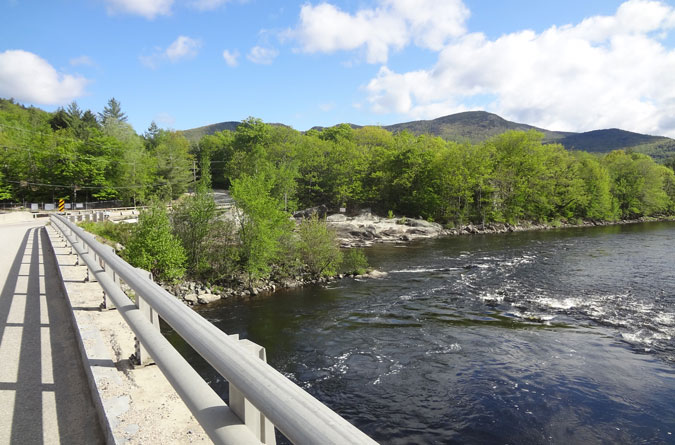
The Centennial Trail is noticeably narrower than the Appalachian Trail on the other side of Route 2, and on Memorial Day weekend it was still littered with dried leaves from fall’s shedding. In other words, even though the border is still over 16 miles away, the Appalachian Trail starts to feel a lot like Maine.
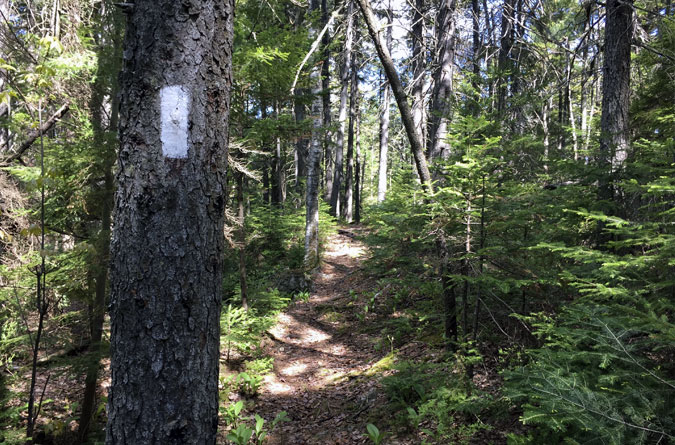
The Centennial Trail climb of Mt. Hayes is mostly casual with a few beefy spurts mixed in for good measure. It plateaus near the top for almost a mile, flirting with treeline and offering sporadic views of Mt. Washington and Mt. Madison.
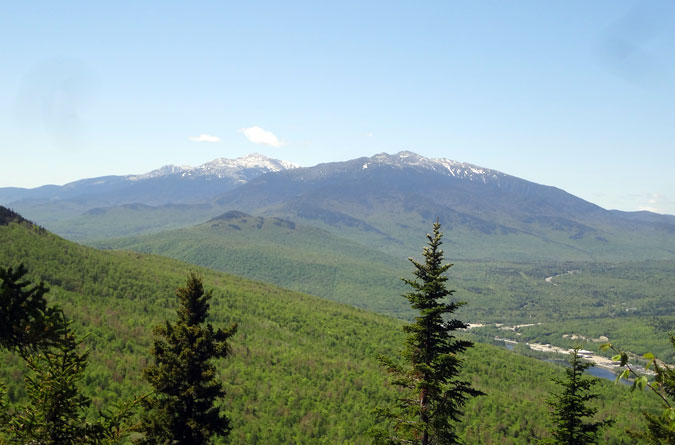
The Appalachian Trail traverses the eastern summit of Mt. Hayes at 2,555 feet; peak baggers can tag the main summit by turning left at the Mahoosuc Range Trail junction and following it west 0.2 mile. The Appalachian Trail turns right at the junction onto the Mahoosuc Range Trail and descends for a mile into the col between Mt. Hayes and Cascade Mountain. Since I was doing this hike early in the season before trail crews could work their magic, this is where the hike also began to show the toll of a long, harsh winter with numerous blowdowns blocking the way.
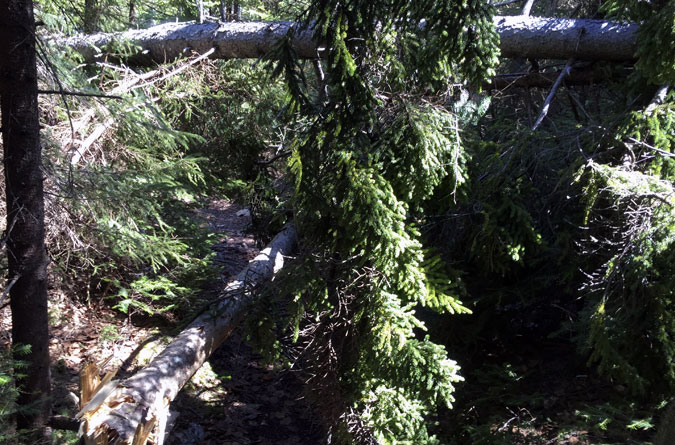
When not littered with debris, the AT stretch from Cascade Mountain to Gentian Pond is pleasant with modest elevation gain, a few scenic ledge lookouts, Trident Col Tentsite, and a couple of small ponds. The ponds ensure water availability along this stretch…albeit, from murky ponds.
[Commercial break: I don’t always drink pond water, but when I do, I use my Sawyer Squeeze.]
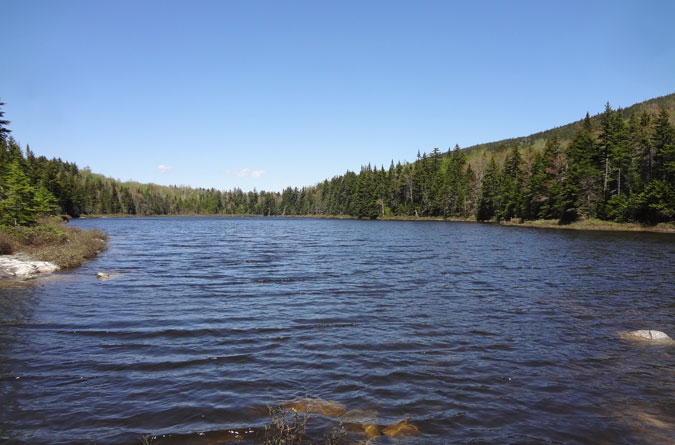
After harboring pre-hike delusions of blowing past Gentian Pond on the first day and possibly making a push for the Carlo Col Shelter, the Mahoosuc Range has a knack for squashing big-mile seekers. My arms and legs oozing blood from fighting through blowdowns, I was happy to waive the white flag and surrender the day at Gentian Pond. All in all it’s one of the better places to stay. Though I camped in my hammock, the two-story shelter sits above a gorge flowing with outlet water from the pond, and there are several well-kept tenting platforms.
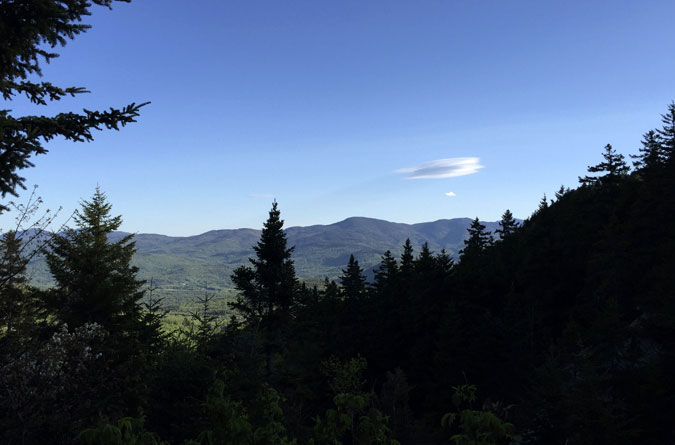

Day two in this Appalachian Trail section is when the serious Mahoosuc Range hiking begins, starting with the steep and rocky climb of Mt. Success. There are a couple fun but formidable ledges like the one in the following picture on both sides sides of the summit. If you’re feeling adventurous, there’s a DC3 plane crash site on Mt. Success. Near treeline and prior to the summit, an unmarked footpath breaks off from the right and reportedly (I didn’t check it out on this trip) becomes difficult to follow. 1 Happy Hiker has a good review of this extra-credit adventure.
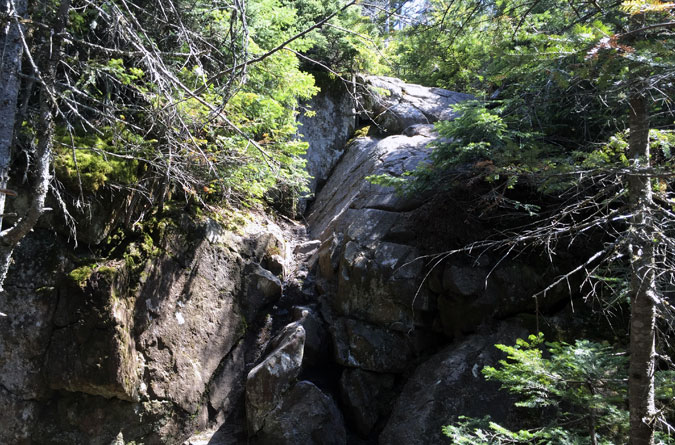
At 3,565 feet, Mt. Success is often overlooked in Mahoosuc Range discussions, overshadowed by Goose Eye, Old Speck, and Mahoosuc Notch, but it holds its own in memorability. The final above-treeline jaunt to the summit through an alpine meadow offers ample views in all directions, including the still-visible Mt. Washington.


On the map, the three-mile Appalachian Trail stretch between the summits of Mt. Success and Mt. Carlo doesn’t look like much. Truth is there’s some serious hiking to be had here, culminating in a steep rock scramble that drops into Carlo Col, a miniaturized gorge preview of Mahoosuc Notch, just prior to the state border. So while the New Hampshire Appalachian Trail welcomes hikers on the southern end with open arms and a bounty of hugs and kisses via Hanover and many easy-going miles prior to the White Mountains, the northern end kicks you in the butt on the way out. So much for hospitality. But really, would you want it any other way?
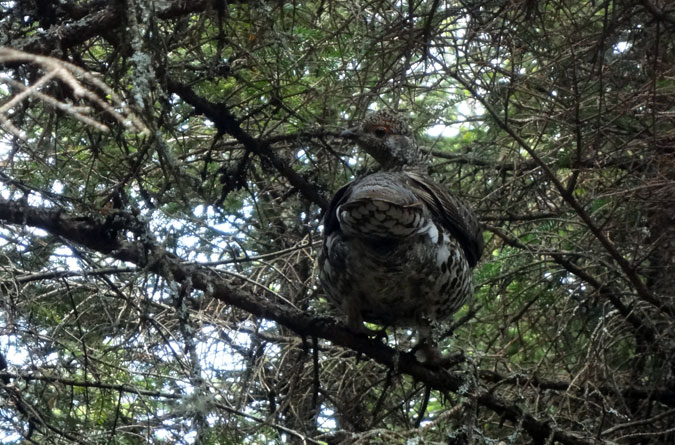
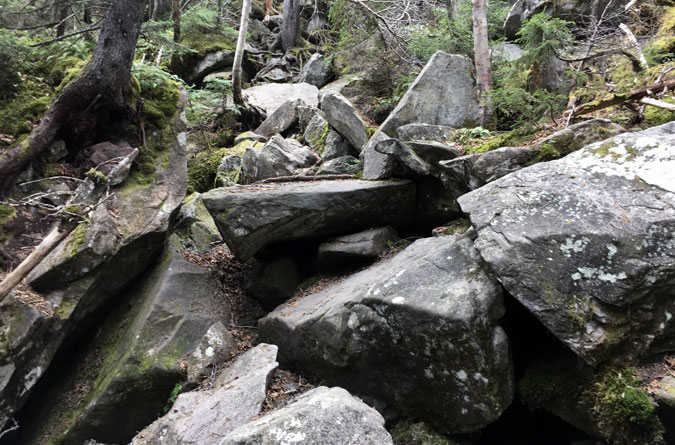
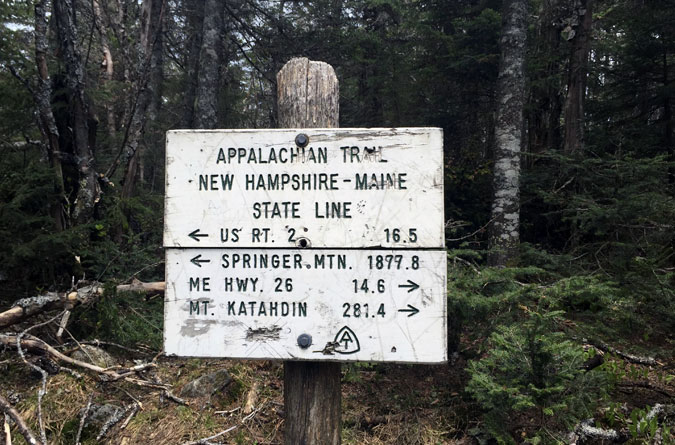
The rugged climb up Mt. Carlo is broken up by the Carlo Col Trail, which leads 0.3 mile to the Carlo Col Shelter. The traverse over the Carlo summit (3,565 feet) includes boardwalks through alpine bogs. If you’re planning on taking a break up here to grab a bite to eat and enjoy the views, you may want to think twice, because the black flies on Carlo can be brutal.

Once Mt. Carlo is in the rearview, it’s all eyes on Goose Eye. Maxing out at 3,800 feet, Goose Eye doesn’t quite make the cut for any 4k lists, but this mountain is massive and unforgettable. The Appalachian Trail’s traverse of its three peaks, lump-in-your-throat ledge climbs, and extended above-treeline hiking make it one of the best trail experiences in Maine. In inclement weather it can also be one of the more treacherous, so proceed with caution (or better yet, hunker down in a shelter), in these conditions.
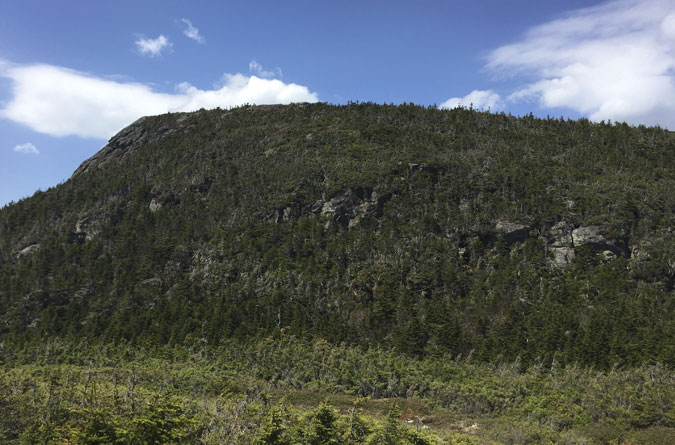
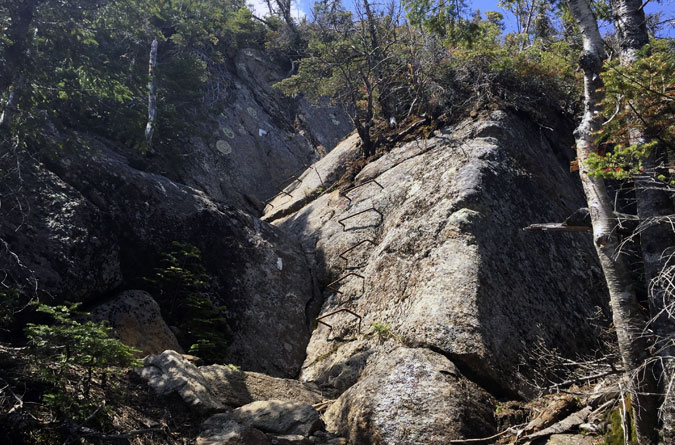
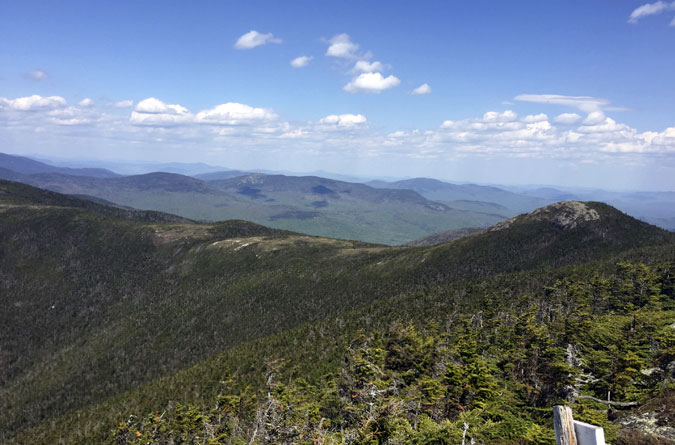
The AT doesn’t traverse Goose Eye’s main summit. This is accessed by a 0.1 mile scramble along the Goose Eye Trail. From this junction, it’s 2.9 miles to the Full Goose Shelter; in between there’s the East Peak (3,790 feet), the North Peak (3,675 feet), some more wooden ladders, and plenty of hiking in and out of treeline.
One interesting part of the Full Goose Shelter is that, despite an obvious way around, the AT makes a point of climbing the knoll to where the campsite is and passing right in front of the shelter. It’s as if to say, You’ve got a big day tomorrow, don’t be stupid, stay here. In that regard, the trail is right. (If you do press on, there’s a well established stealth site at the northern end of Mahoosuc Notch; just keep in mind that the notch is no place you want to be in the dark.)
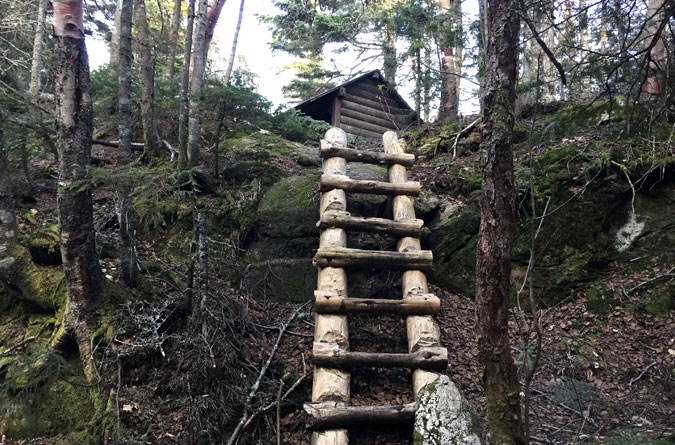
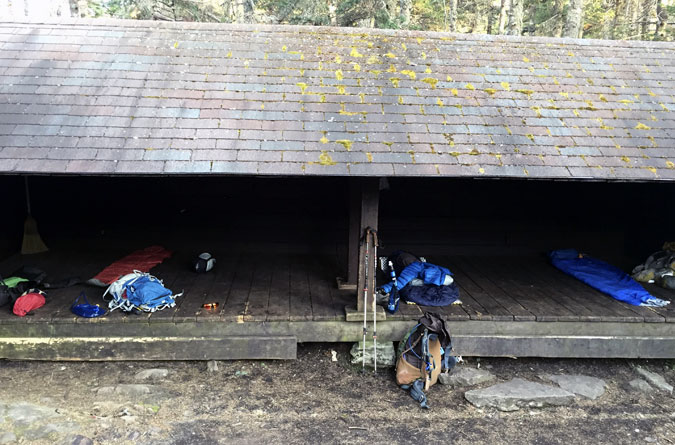
The Full Goose Shelter includes a lean-to, several tent platforms, privy, and bear box. The water source is a trickling stream that’s known to go dry in late summer, so August hikers should plan ahead for the possibility that water isn’t available.
After staying in the shelter with several other hikers, I woke up bright and early the next morning to get a jump on the day. The early rise paid off with plenty of shine on Fulling Mill Mountain (elevation 3,395 feet), the climb for which begins immediately after the Full Goose Shelter. The north-bound ascent is short but hearty in places, followed by a steep and rocky descent into Mahoosuc Notch.
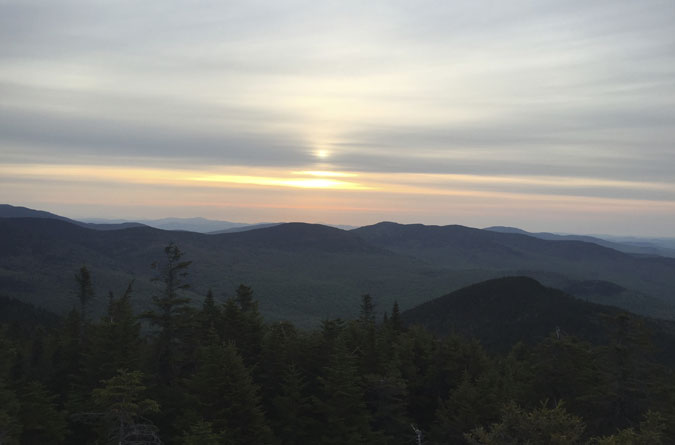
The Mahoosuc Notch Trail enters on the left just prior to the southern end of Mahoosuc Notch. This deep gorge is filled with boulders that broke off the tall cliffs lining each side. The next mile of trail, which took me 45 minutes to complete, is a scramble over, around, and even under these giant rocks. The air inside the notch is cold and damp, stemming from the snow and ice that persists under the rocks well into July. On Memorial Day weekend, there was still enough winter left to warrant microspikes.
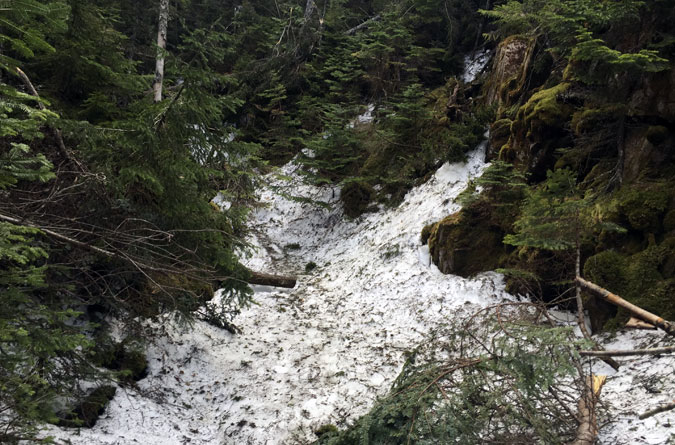
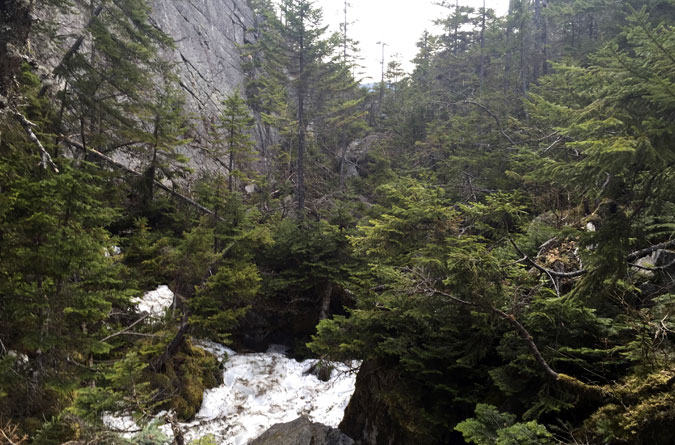
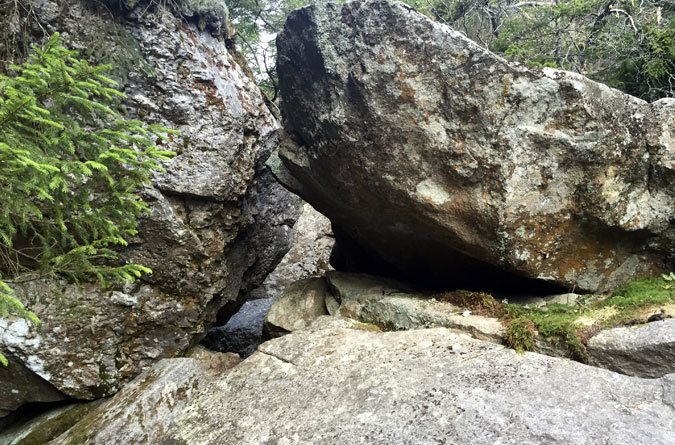

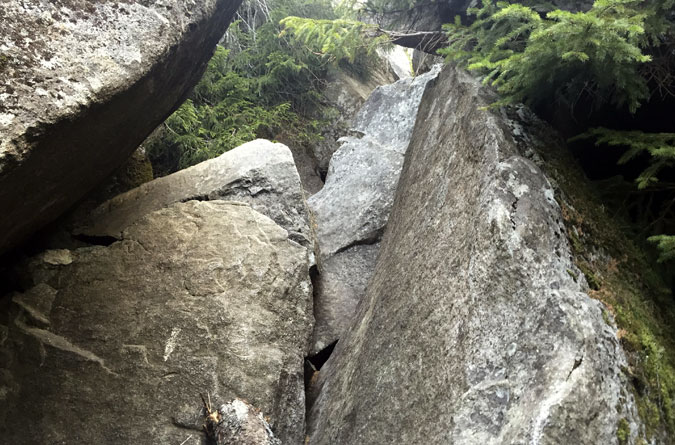
For all the gusto of Mahoosuc Notch, the fun and games are over quickly, as the notch is immediately followed by a demanding climb up the Mahoosuc Arm of Old Speck Mountain. About 1,500 feet of elevation gain is achieved over the next 1.5 miles, a good portion of it climbing a steep section of open rock that can be hazardous in wet weather.
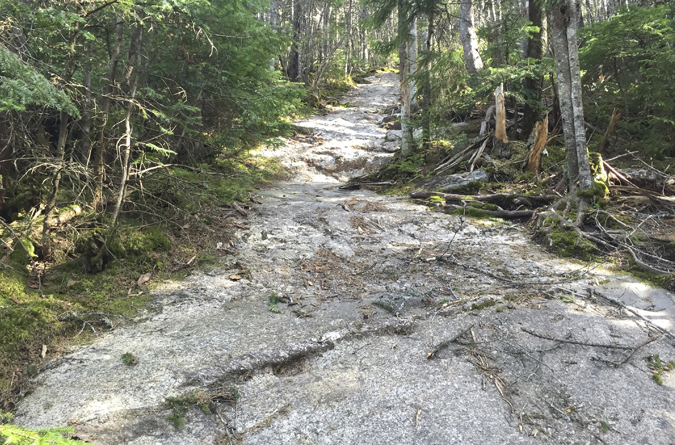
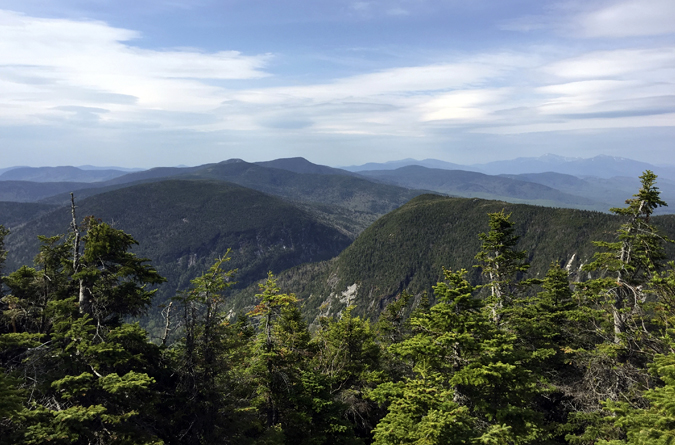
From the peak of the Mahoosuc Arm, elevation 3,770 feet, the Appalachian Trail circles around the arm offering several more scenic views before descending to Speck Pond, the highest tarn in Maine at 3,400 feet. The Speck Pond Shelter includes a lean-to, several tenting platforms, a privy, bear box, and a pristine spring that’s worth the fill up even if you aren’t staying. Speck Pond is a caretaker site with an AMC fee.
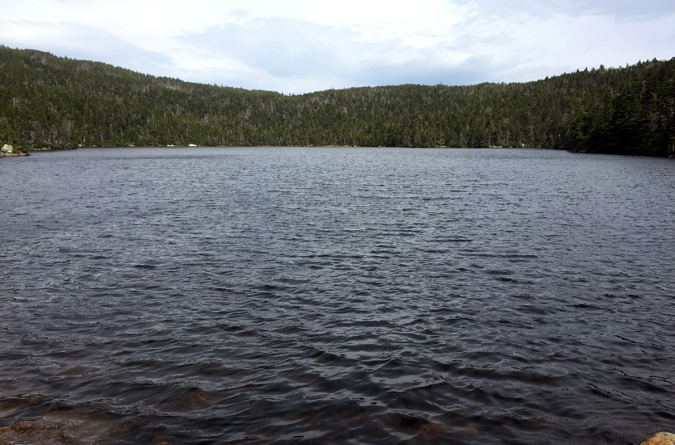
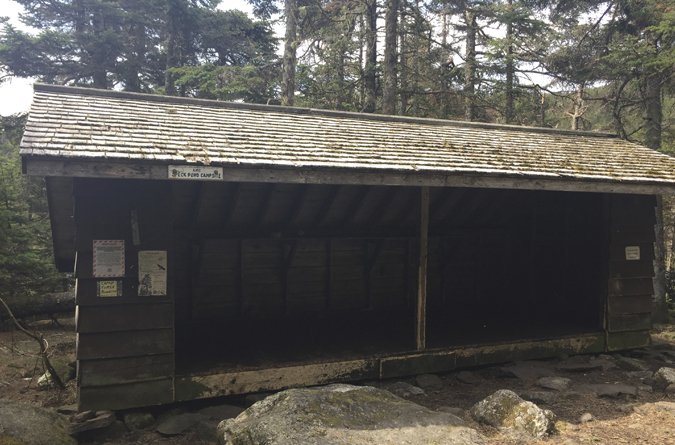
If you aren’t already fully spent, the final climb up Old Speck makes sure you don’t leave this hike disappointed. It’s a steep climb with 600 feet of elevation gain, much of it in the open and exposed to the elements. The Appalachian Trail doesn’t traverse the summit of Old Speck, but you can reach it via an easy 0.3 mile side trail. The summit is wooded, but trees have been cleared to provide views to the northeast. There’s also a fire tower that can be climbed for full 360 degree views.
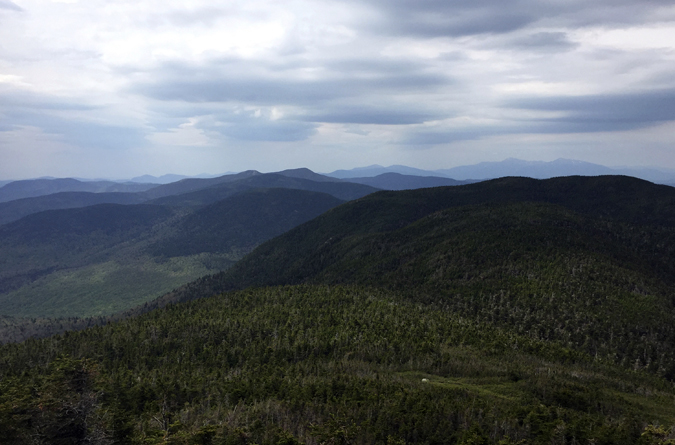
From the summit side-trail junction, there’s 3.5 rugged miles descending Old Speck into Grafton Notch. This section of trail is steep and rocky in sections, but also provides a few forgiving short but flat stretches in between. Even still, at the end of this monstrous 31-mile hike, it seems never-ending.


Hello! I have a NH AT question. Many years ago my friend and I went out to backpack the Mahoosuc Range from Gorham starting on the Centennial Trail at the end of May. Were we in for a weather treat we weren’t prepared for! Pouring rain, low clouds and visibility. I thought it was the first real peak we hit that had a rock slide to the top – am I remembering wrong? Or was that Success? I think it was before we reached Carlo Col. There were no views at all or I’d have a better memory of it.
Thanks,
Jim Cronin
Hi Jim. I don’t recall any rock slides. Success is open granite on the S to N approach, and there are some steep ledges coming down the opposite side, as well as a steep rock scramble into the col before Carlo. Does that help?